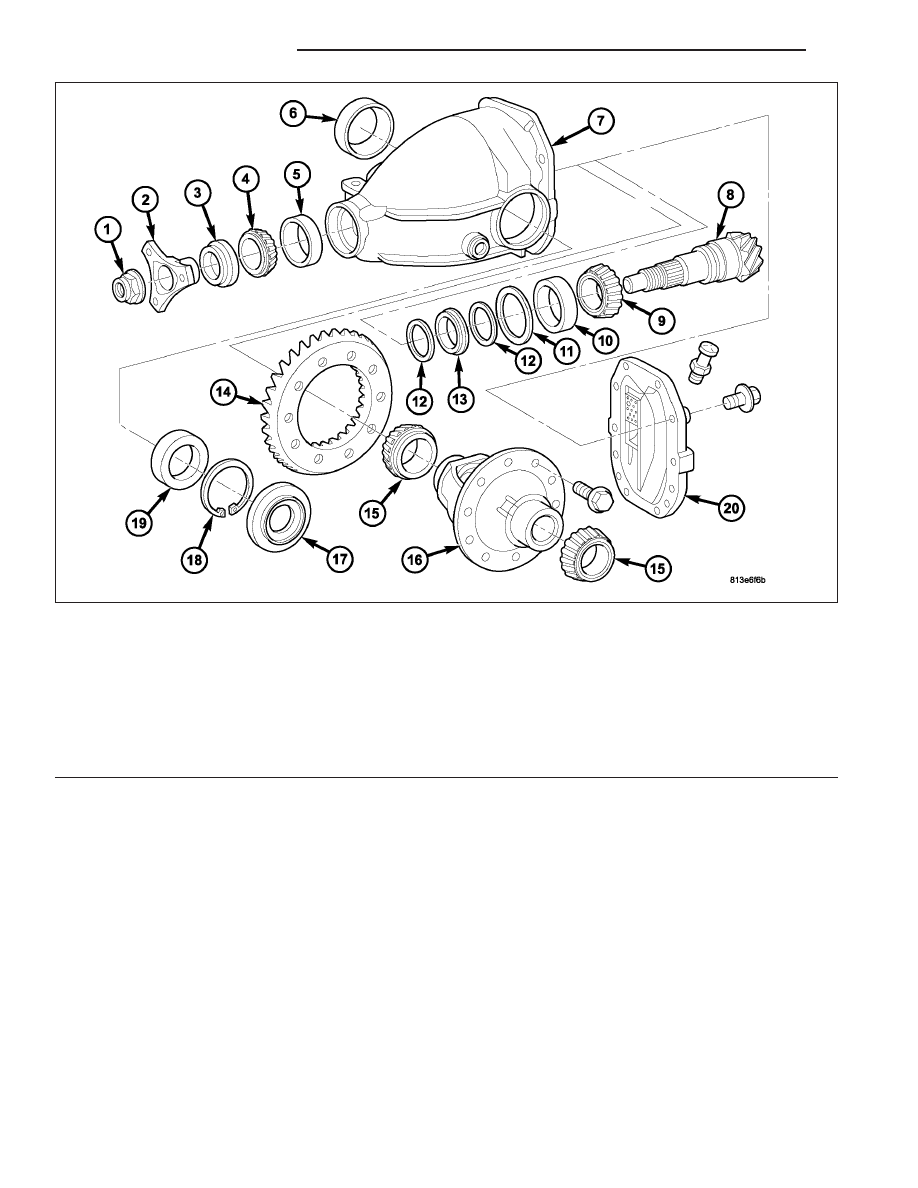Chrysler 300/300 Touring/300C, Dodge Magnum. Manual - part 94

198/210 Axle Components
1 - NUT, PINION FLANGE
11 - SHIM, PINION DEPTH
2 - FLANGE, PINION
12 - WASHER (2)
3 - SEAL, PINION
13 - SPACER, COLLAPSIBLE
4 - CONE, PINION TAIL BEARING
14 - GEAR, RING
5 - CUP, PINION TAIL BEARING
15 - CONE, DIFFERENTIAL SIDE BEARING
6 - CUP, DIFFERENTIAL SIDE BEARING
16 - DIFFERENTIAL
7 - HOUSING, AXLE
17 - SEAL, AXLE
8 - GEAR/SHAFT, PINION
18 - RING, SNAP
9 - CONE, PINION HEAD BEARING
19 - CUP, DIFFERENTIAL SIDE BEARING
10 - CUP, PINION HEAD BEARING
20 - COVER, AXLE HOUSING
3 - 108
REAR AXLE - 198RII
LX